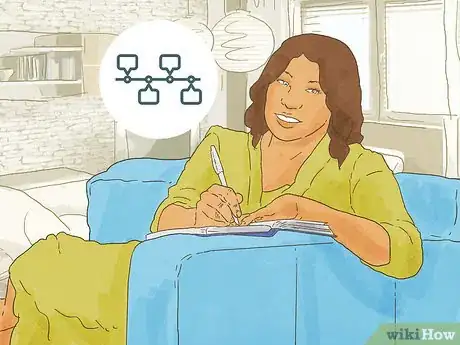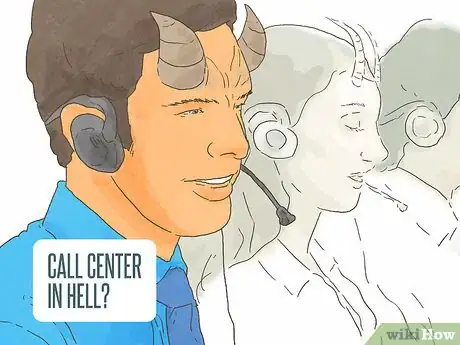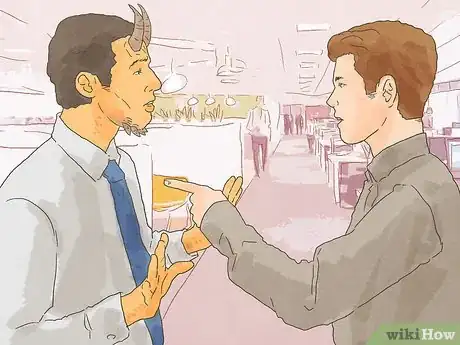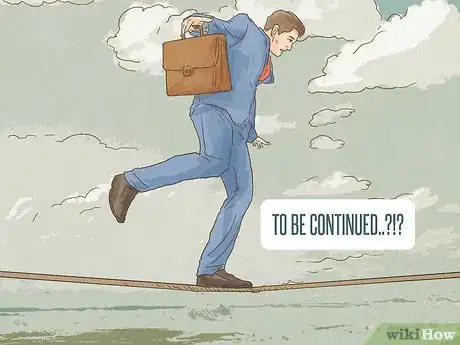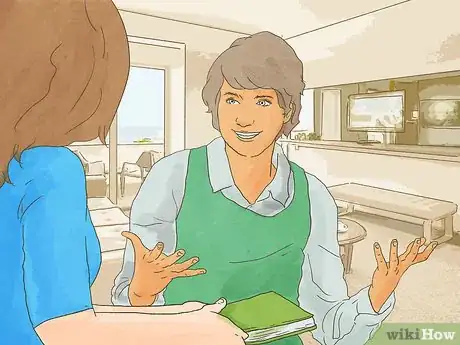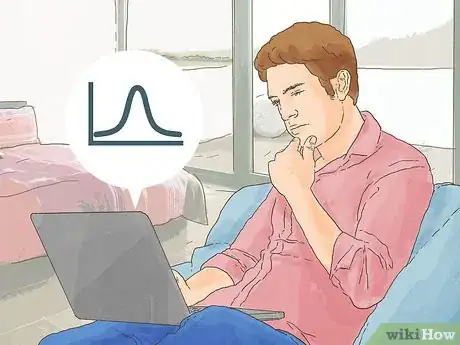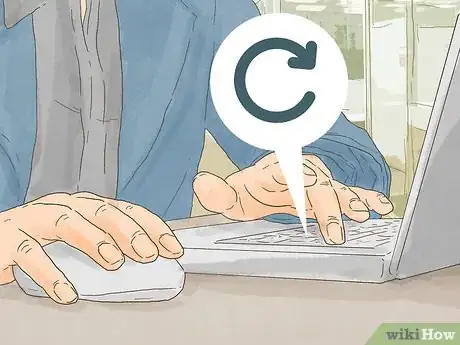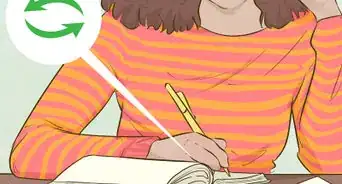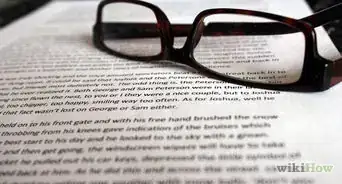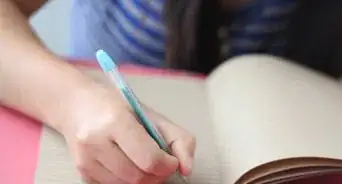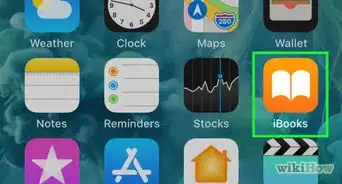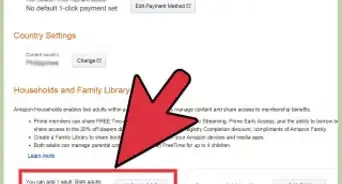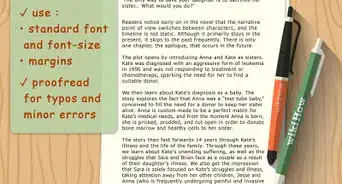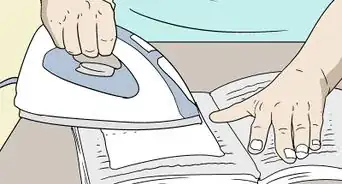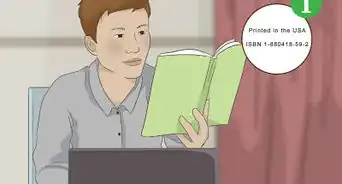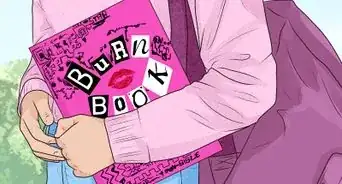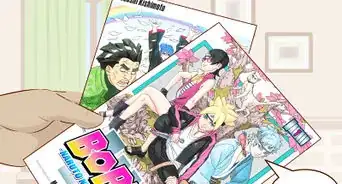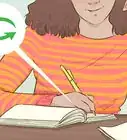This article was co-authored by Grant Faulkner, MA. Grant Faulkner is the Executive Director of National Novel Writing Month (NaNoWriMo) and the co-founder of 100 Word Story, a literary magazine. Grant has published two books on writing and has been published in The New York Times and Writer’s Digest. He co-hosts Write-minded, a weekly podcast on writing and publishing, and has a M.A. in Creative Writing from San Francisco State University.
wikiHow marks an article as reader-approved once it receives enough positive feedback. This article has 20 testimonials from our readers, earning it our reader-approved status.
This article has been viewed 668,428 times.
Creating a graphic novel can be a fun challenge, as you get to write an original story and bring it to life with illustrations. A good graphic novel will move readers emotionally and visually, combining a great plot with striking images. This genre allows you to show the characters and the setting in your story to readers in graphic detail. With a little brainstorming, drafting, and polishing, you can create a graphic novel worth sharing in no time.
Things You Should Know
- Brainstorm a plot outline, cast of characters, and setting for your graphic novel, then pick an art style and start storyboarding.
- Create a draft of the novel, introducing the setting, characters, their central conflict, and a resolution—and make sure the character art is consistent.
- Get feedback from other people and read your graphic novel aloud to polish it, revising as needed until you have a final draft you can ink and color.
Steps
Brainstorming Ideas
-
1Create a plot outline. A good graphic novel starts with a strong story that has a central plot. Outline the general events of the novel using a plot diagram with five parts:[1]
- Exposition: This is the set up for the graphic novel, including the setting, the main character, and the conflict. For example, you may have exposition like: a young alien living in a small town falls in love with a human girl.
- The inciting incident: This is the event that changes the course of the main character's life. For example, you may have an inciting incident like: the human girl breaks up with her human boyfriend and is looking for a date to the school dance.
- The rising action: This is where you develop the characters and explore their relationships. For example, you may have rising action like: the alien starts spending time with the girl after school to study for a big exam.
- The climax: This is the high point of the story, where the main character has to make a major choice or decision. For example, you may have a climax like: the alien decides to ask the girl to the dance during one of their study dates. She says yes and the alien now has to figure out what to do at a dance, on a date.
- The falling action: This is the point where the main character deals with the results of their decision and is usually packed with action and suspense. For example, you may have falling action like: the alien and the girl go to the dance but everyone else there is hostile towards them. The alien then has to deal with an angry mob of people chasing him and the girl around at the dance.
- The resolution: This is the point where there reader learns where the main character ends up and whether they succeed or fail in their goal or desire. For example, you may have a resolution like: the girl stands up for the alien and they fly off together on a UFO.
-
2Focus on an interesting main character or cast of characters. Create a main character that is memorable and unique. Give your main character specific personality traits and a unique perspective on the world. Avoid cliche characters or characters that a reader may already be familiar with.
- For example, you may create a main character who is born with a secret superpower and struggles to keep it from others around them. Or perhaps your main character is an alien who is trying to win the heart of a human.
- You can also focus on a cast of characters to give the graphic novel more scope, such as a family or a group of friends.
- This is a great time to define, what drives or motivates your character? what is the character's desire, and what is standing in between the character's desire and achieving that desire?
Advertisement -
3Explore a setting. Pick a setting that will give the novel depth and make it interesting on a visual level. Go for a setting that is a little surreal so you can include landscapes that are fun for the reader to look at. You can also take a setting you know well and make it a little strange or skewed.
- For example, you may set the graphic novel on a planet that resembles Earth, but is populated by aliens instead of humans. Or you may add surreal elements to your hometown and make that the setting.
-
4Pick a particular drawing style. Make your graphic novel distinct by going for a drawing style that you like and can do well. Maybe you use manga or U.S. comics as drawing inspiration. Or perhaps you challenge yourself to try a new drawing style. Go for a drawing style that feels unique, but also true to your skills and vision as an artist.[2]
- You should also select a drawing style that is easy for you to do and not too time consuming. Once you draft the novel, you can always go back and tweak the drawing style.
-
5Storyboard the novel. Create small squares on blank paper. Then, take a scene in the novel and draw it out, panel by panel. Include text at the bottom of the squares. Think about how you are going to represent the setting and the characters in the scene. You can then try storyboarding several scenes to get a better sense of how the novel will look on the page.
- You can make the panels all the same size or experiment with panels that are different sizes.
-
6Read examples of graphic novels. To get a better sense of the genre, read graphic novels that have been published to great acclaim. You may read graphic novels that use different drawing styles so you can see what you like and respond to. You may read:
Creating a Draft
-
1Introduce the characters and setting to the reader. The first few pages of your graphic novel should tell the reader who and what the novel is going to be about. Open with a scene that shows your main character in action in the setting. Or begin with dialogue and images that tell the reader a bit about the conflict between main character and another character.
- For example, you may open with a scene where the main character gets ready for school. You could then show the alien habits of the main character and introduce the school as the main setting for the novel.
-
2Include conflict between characters. A good story hinges on conflict and tension between your characters. Do not be afraid to put your main character in a tricky or difficult situation. Give your main character a goal and then put obstacles in their way so it is hard for them to achieve their goal. You can also have conflict between your main character and others around them.
- For example, you may create a conflict between the main character and their boss. You can then show the main character butting heads with their boss, or even beating up their boss with their superpowers.
-
3Keep the characters' features consistent throughout the novel. As you start to draw the graphic novel, focus on several key character features and try to create them the same way each time. Maintain consistent features for your characters from panel to panel so the novel feels cohesive.[6]
- Use pencil to draw the initial panels for the novel so you can adjust them, if needed, to keep them consistent.
- For example, you may give your main character a distinct hairstyle. You will then need to ensure you draw their hairstyle the same way, or as similar as you can, whenever the character appears in the novel.
-
4Make the setting detailed and eye catching. Pull your reader into the story by including interesting details in the setting. Give your setting just as much attention as your characters. Include objects that are particular to the setting you have created. This will help to build the world of the story and keep your reader engaged.
- For example, if your novel is set in a high school for aliens, you may include details like parking spaces for UFOs, textbooks on “How to Pretend to be Human,” and clocks set to different time zones across the universe.
-
5Include dialogue that develops character and furthers the story. The dialogue in your graphic novel should tell the reader more about the character speaking. It should also push the story forward on a plot level. Avoid generic dialogue like “Hello,” or “How are you?” Instead, include dialogue that is particular to your characters.
- For example, you may give your main character a catchphrase that they tend to say when they are startled or surprised, such as “Yikes!” or “Holy Alien!”
- Some graphic novels have little to no dialogue. As the creator, you can decide if you'd like to include dialogue for your characters or if you'd prefer to let the visuals do the talking.
-
6End with a resolution or realization. Like any good story, your graphic novel should end by resolving or addressing the conflict. Your main character may finally get what they want, but for a price. Or your main character may realize something about another character and feel a sense of resolution that way. Try to bring the story full circle for the reader so they are satisfied with the ending.
- You may include images that provide a resolution of the conflict. Or you may include a conversation between the main character and another character to help them both realize their mistakes or resolve their misunderstanding.
-
7Use a cliffhanger ending if your graphic novel is part of a series. If you are writing the graphic novel as part of a series of novels with the same characters or setting, leave the reader in suspense. You may end with “To be continued…” or an image that lets the reader know there is more to come from the characters and the world you have built in the novel.
Polishing the Draft
-
1Show the graphic novel to others. Ask friends, family members, and peers to read your draft. Get them to give you feedback on whether they found the novel interesting and unique. Ask them if they found the visuals engaging and entertaining. Be open to constructive criticism from others, as this will only make your graphic novel stronger.
-
2Read the graphic novel aloud. Listen to how the dialogue sounds when read aloud to make sure it sounds natural, rather than stilted or awkward. Notice if your characters have a distinct way of speaking. Check the dialogue helps to move the action of the story forward.
- Reading the novel aloud can also help you check for spelling, grammar, and punctuation errors.
-
3Check the flow and plot development. Make sure the novel flows well from scene to scene or section to section. Underline or mark any sections that are awkward or do not not flow well.
- You should also check that the plot develops clearly in the novel. It should follow your plot outline, with a clear central conflict and a climax.
-
4Revise the novel. Take the feedback you received from others, as well as your own thoughts, and do a deep revision of the novel. Be relentless and cut out any content that does not make sense or further the story. Try to make the novel better and more engaging for your reader.
-
5Add ink and color to the novel. You may do this manually with ink and colored pens. Coloring can also be done by hand with paint or art markers. Make sure you erase any pencil marks once you have inked and colored the novel.[7]
- You can also use a computer program like Adobe Photoshop to help speed up the inking and coloring process.
Graphic Novel Examples
Community Q&A
-
QuestionI have a written novel, but I want to turn it into a graphic novel in order to help the readers visualize the story. What should I do if I'm not good at drawing?
 Community AnswerI would recommend either taking courses to improve your own artwork or hiring an artist who can bring your story to life for you (with your help and guidance). There are a lot of people out there who are really good at drawing, and chances are, you might know one of them. Talk to them, explain your ideas, and show them your novel.
Community AnswerI would recommend either taking courses to improve your own artwork or hiring an artist who can bring your story to life for you (with your help and guidance). There are a lot of people out there who are really good at drawing, and chances are, you might know one of them. Talk to them, explain your ideas, and show them your novel. -
QuestionIs there a website or something similar to use for inking, lettering, or coloring?
 Community AnswerMakingcomics.com has a "making a graphic novel" section and this has 10 steps that are well written.
Community AnswerMakingcomics.com has a "making a graphic novel" section and this has 10 steps that are well written. -
QuestionWhat paper should I use for drawing and inking?
 Community AnswerCopic marker paper is bleed-resistant and has a very good texture. You can buy it online.
Community AnswerCopic marker paper is bleed-resistant and has a very good texture. You can buy it online.
References
- ↑ http://www.makingcomics.com/2014/09/24/10-things-start-comic-graphic-novel/
- ↑ http://www.makingcomics.com/2014/09/24/10-things-start-comic-graphic-novel/
- ↑ https://www.thecut.com/2017/07/6-graphic-novels-to-make-you-cry.html
- ↑ https://www.thecut.com/2017/07/6-graphic-novels-to-make-you-cry.html
- ↑ https://www.thecut.com/2017/07/6-graphic-novels-to-make-you-cry.html
- ↑ http://www.hoodedutilitarian.com/2014/04/how-not-to-make-a-graphic-novel/
- ↑ https://www.markfearing.com/how-to-make-a-graphic-nove/
About This Article
To create a graphic novel, start by writing a basic plot line and creating memorable characters. Next, draw illustrations in pencil so you can adjust them as you make edits. Then, write the characters’ dialogue into the images and make sure that the words tell the reader something interesting about the person speaking. When you’ve completed the draft, get feedback and edit your graphic novel to make it more enjoyable for the reader. Finally, add ink and color to your illustrations manually or using a computer program like Photoshop. For tips on writing the perfect ending to your graphic novel, read on!
